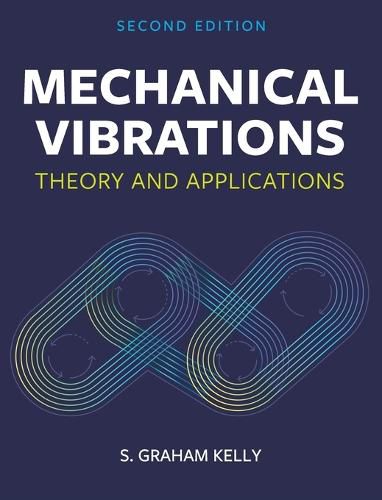Readings Newsletter
Become a Readings Member to make your shopping experience even easier.
Sign in or sign up for free!
You’re not far away from qualifying for FREE standard shipping within Australia
You’ve qualified for FREE standard shipping within Australia
The cart is loading…






Mechanical Vibrations: Theory and Applications presents the basic principles of engineering vibrations and introduces students to a strategic framework to advance their knowledge and skill in engineering problem-solving.
The opening chapter reviews key topics, including mathematical modeling, dimensional analysis, dynamics, and more. Chapter 2 focuses on the elements that comprise mechanical systems and the methods of mathematical modeling of mechanical systems. Two methods for the derivation of differential equations for a linear system are presented: the free-body diagram method and the energy method.
Chapters 3 through 5 focus on single degree-of-freedom (SDOF) systems. Chapter 3 concentrates on free vibration of SDOF systems. Forced vibration of SDOF systems is covered in Chapter 4 (harmonic excitation) and Chapter 5 (general transient excitation).
Chapter 6 is focused on free and forced vibration of two degree-of-freedom systems. Chapters 7 through 9 cover general multiple degree-of-freedom (MDOF) systems. Chapter 7 concentrates on the derivation of differential equations governing MDOF systems. Chapter 8 concentrates on free vibration, whereas Chapter 9 covers forced vibration. The final chapter provides a brief overview of vibrations of continuous systems.
Mechanical Vibrations: Theory and Applications is designed to serve as a primary textbook for advanced undergraduate courses on vibrations. Chapters 7 through 10 are appropriate for use as a standalone resource for graduate-level courses.
$9.00 standard shipping within Australia
FREE standard shipping within Australia for orders over $100.00
Express & International shipping calculated at checkout
Mechanical Vibrations: Theory and Applications presents the basic principles of engineering vibrations and introduces students to a strategic framework to advance their knowledge and skill in engineering problem-solving.
The opening chapter reviews key topics, including mathematical modeling, dimensional analysis, dynamics, and more. Chapter 2 focuses on the elements that comprise mechanical systems and the methods of mathematical modeling of mechanical systems. Two methods for the derivation of differential equations for a linear system are presented: the free-body diagram method and the energy method.
Chapters 3 through 5 focus on single degree-of-freedom (SDOF) systems. Chapter 3 concentrates on free vibration of SDOF systems. Forced vibration of SDOF systems is covered in Chapter 4 (harmonic excitation) and Chapter 5 (general transient excitation).
Chapter 6 is focused on free and forced vibration of two degree-of-freedom systems. Chapters 7 through 9 cover general multiple degree-of-freedom (MDOF) systems. Chapter 7 concentrates on the derivation of differential equations governing MDOF systems. Chapter 8 concentrates on free vibration, whereas Chapter 9 covers forced vibration. The final chapter provides a brief overview of vibrations of continuous systems.
Mechanical Vibrations: Theory and Applications is designed to serve as a primary textbook for advanced undergraduate courses on vibrations. Chapters 7 through 10 are appropriate for use as a standalone resource for graduate-level courses.